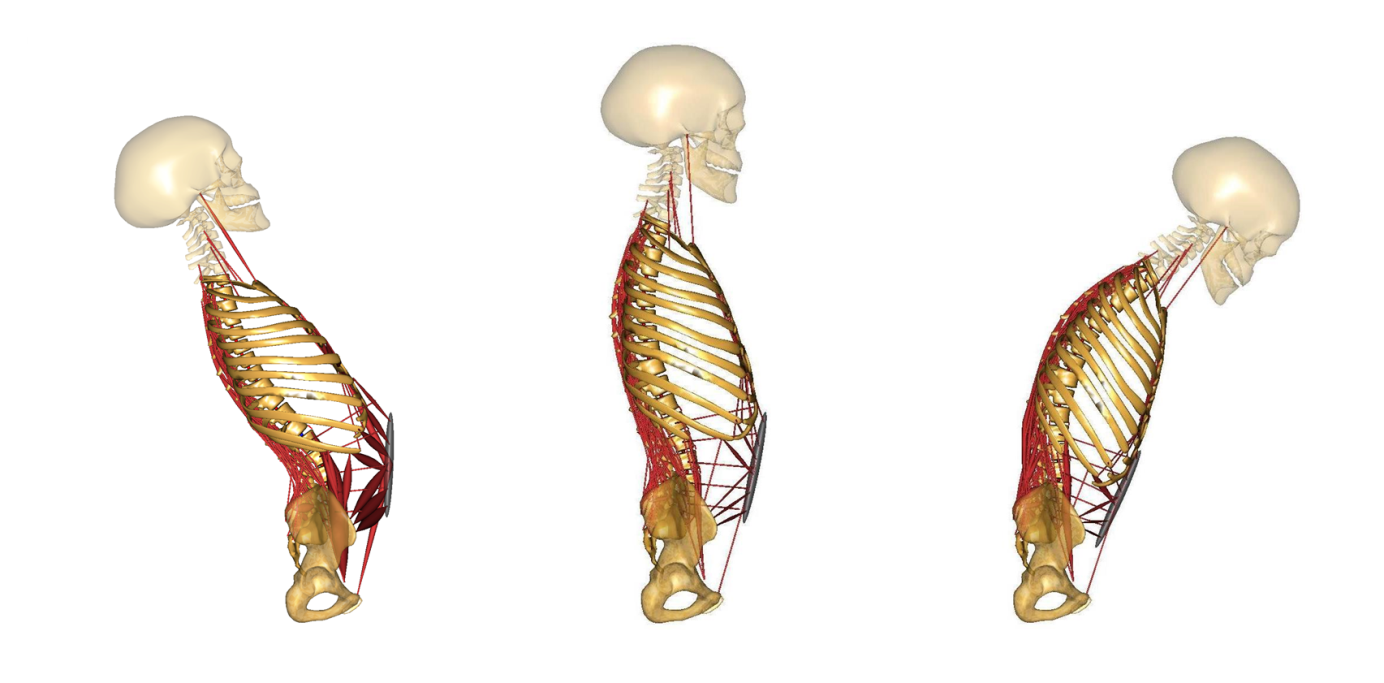Sarcopenia: Implications of Age-Related Muscle Loss for Spinal Posture and Fracture Risk
An osteoporotic vertebral fracture is estimated to occur every 22s worldwide. Important fracture risk factors include an excessive thoracic curvature (hyperkyphosis), leading to loss of spinal balance; age-related decline of muscle mass and strength (sarcopenia), which affects muscular spine stabilization; and changes in body movement patterns with advancing age, further altering spine biomechanics. The relative importance of these age-related changes on spinal segmental loading and associated risk of fracture remains unknown.
Therefore, the objective of this work is to evaluate the influence of sarcopenia, spinal posture and kinematics on spinal segmental loading, using a numerical musculoskeletal modelling. A previously established musculoskeletal model of the lumbar spine (AnyBody Modeling System) has been enhanced by including a detailed mechanical representation of the thoracic region with ribcage.
The introduced bony segments have been stabilized by a number of muscle fascicles and elastic elements representing soft-tissue effects, e.g., lumbar and thoracic intervertebral discs, costal cartilages, or intercostal muscles. The model predictions agreed with experimental data and confirmed the necessity of introducing thoracic cage structures for reliable simulation results.
In order to study the effects of sarcopenia, important spine extensor muscles will be scaled in the model to represent patient-specific muscle volume data, derived from collected MRI scans. The young and elderly spine curvatures, measured with a skin surface device (SpinalMouse), and corresponding spine kinematics, recorded with motion capture technology during several daily living tasks, will provide a realistic input for the model.
The measurement results from all study parts: regarding muscle quality, spinal posture and kinematics, have revealed relevant differences between the young and elderly age groups. The effects of these age-related changes on the spinal loading and related risk of vertebral fractures will be investigated in the future simulation work.
Contact
No database information available

